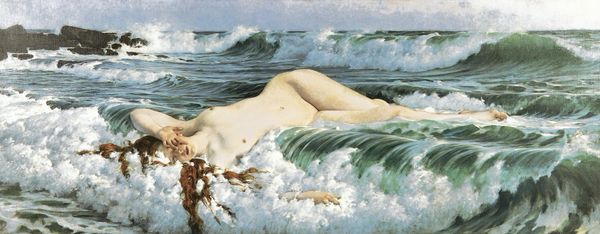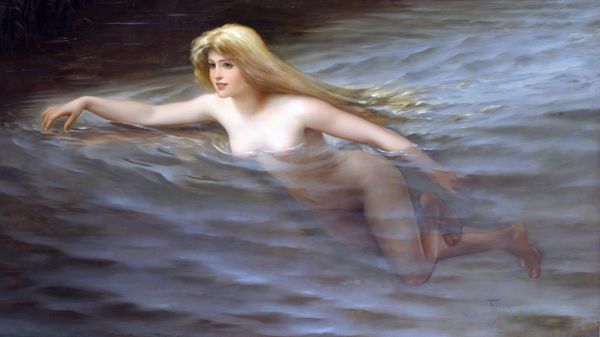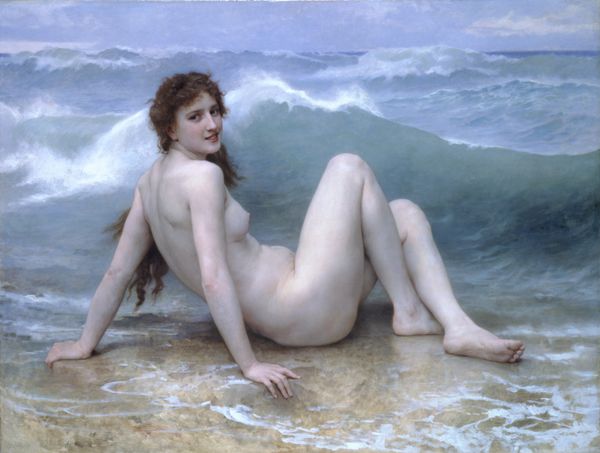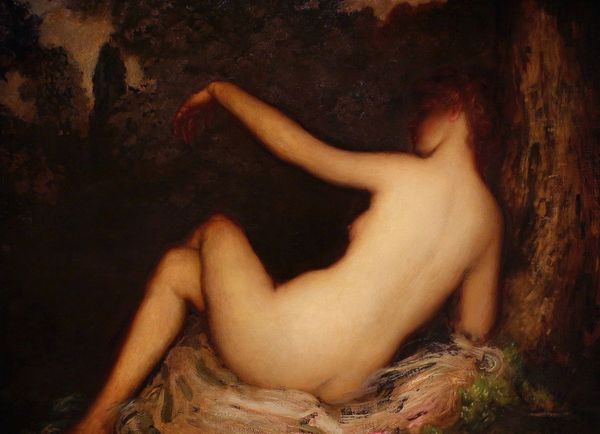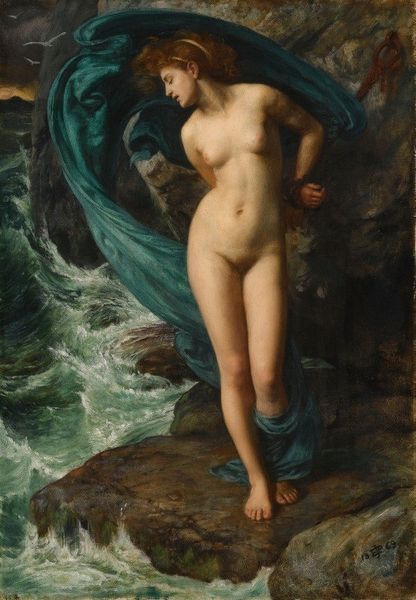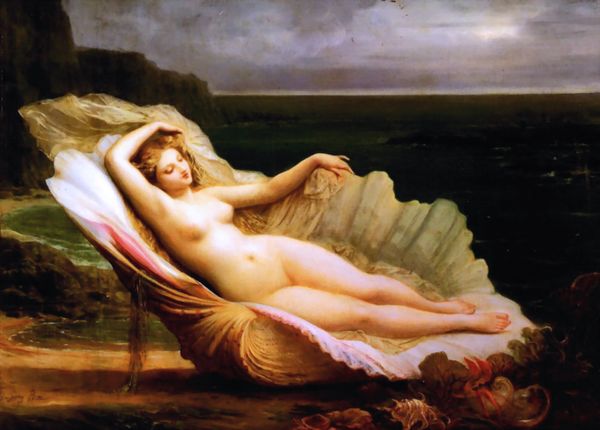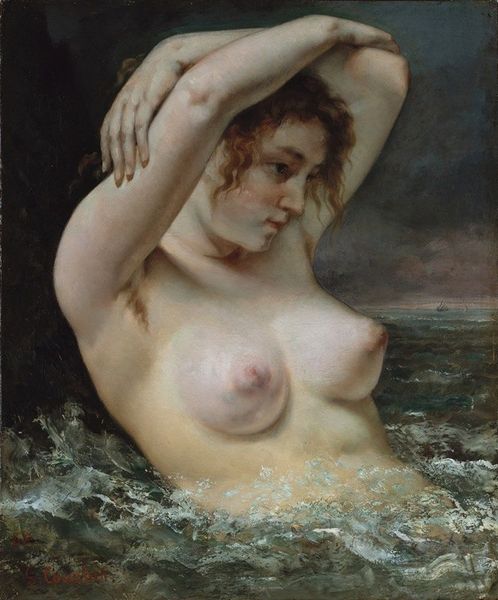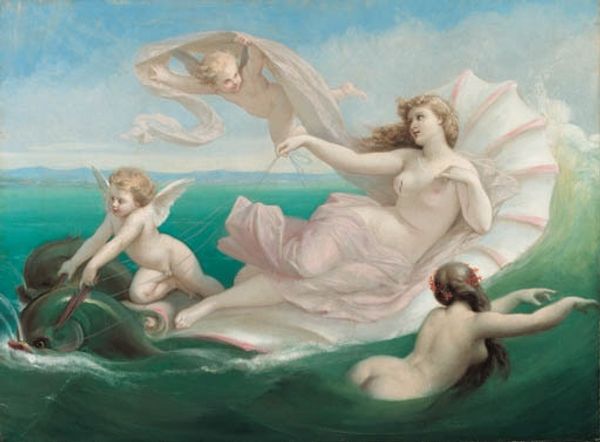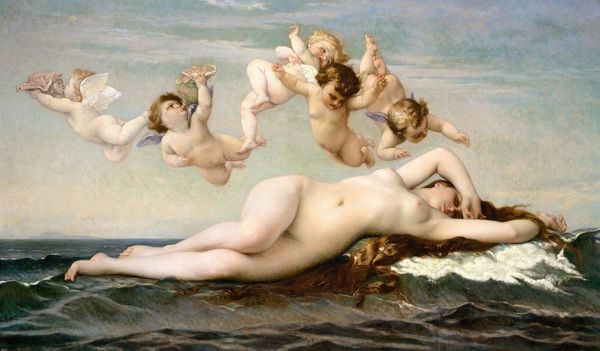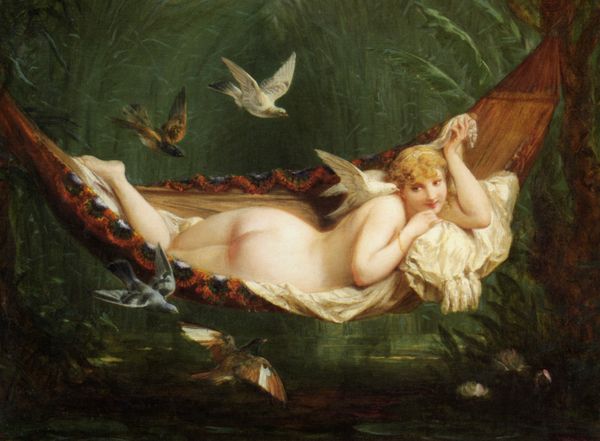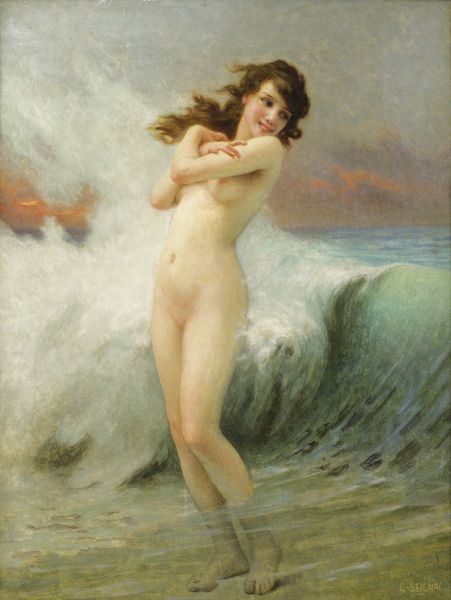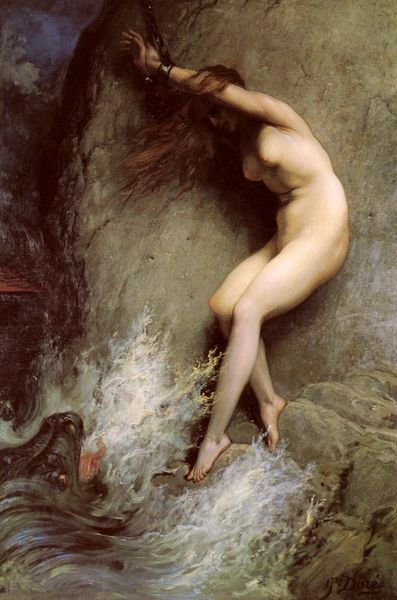
painting, oil-paint
#
fantasy art
#
painting
#
oil-paint
#
figuration
#
romanticism
#
water
#
mythology
#
academic-art
#
lady
#
nude
Copyright: Public domain
Guillaume Seignac painted this vision of a nude woman reclining on a wave during the late nineteenth and early twentieth century in France. The art institutions of the time favored the academic style of painting evident here, with its smooth finish, idealized figure, and mythological subject. The image's visual codes are clear: the woman's nudity and the laurel leaves identify her as a nymph or goddess, a subject deemed appropriate for the public display of the nude female form. But one wonders if it could also be interpreted as a comment on the social roles of women, who were often seen as decorative objects or muses. To understand the cultural context of this painting, we can consider how the French Third Republic, established in 1870, impacted the art world. The Third Republic sought to promote French culture and identity after the Franco-Prussian War. Art academies flourished, and artists like Seignac found success by catering to the tastes of the bourgeoisie. Art historians use a range of sources to interpret artworks, from exhibition catalogs and critical reviews to artist biographies and social histories. By considering the social and institutional context of a work of art, we can gain a deeper appreciation of its meanings and its role in shaping cultural values.
Comments
No comments
Be the first to comment and join the conversation on the ultimate creative platform.


